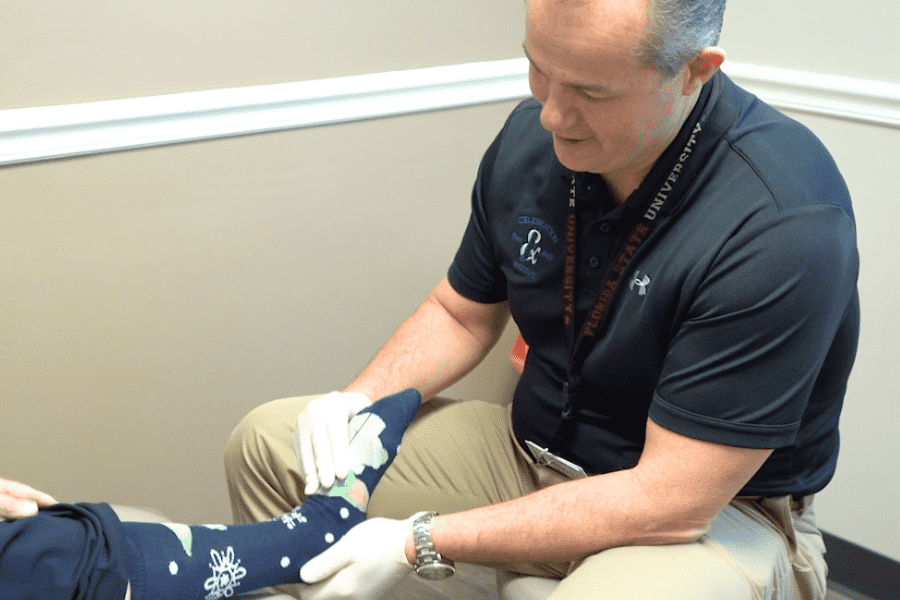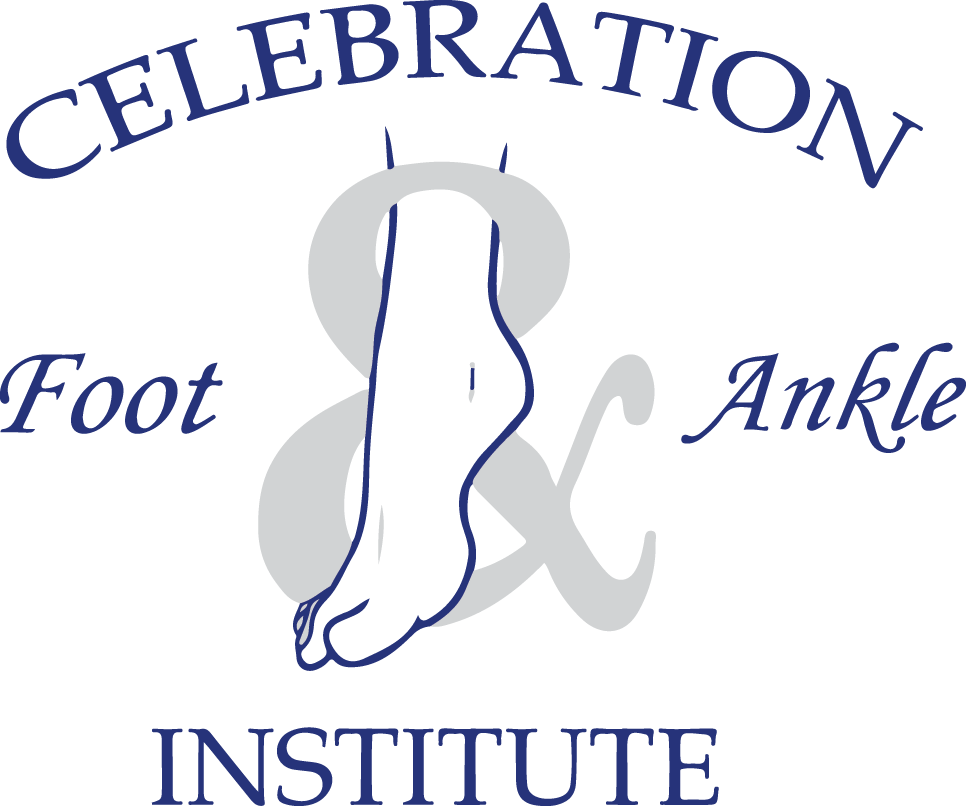
- What Causes Ankle Pain?
- Can Ankle Surgery Help with Pain?
- What to Expect Before and After from Ankle Surgery?
- What is CRPS?
When facing ankle surgery, it is normal to experience a range of emotions, including hope for pain relief and apprehension about the recovery process. Gail has gone through multiple ankle surgeries performed by Duane MrRorie, M.D., a board-certified foot and ankle surgeon at Celebration Foot and Ankle.
With pain that no one else could identify, Gail went to Dr. McRorie and received the best care, explaining,
“The biggest benefit is I know he’s always there for me. If something happens and he isn’t, his other two doctors in the practice are there for me.”
What Causes Ankle Pain?
Ankle pain can originate from various sources, including injuries (such as sprains and fractures), arthritis, gout, tendonitis, and infections. It’s a common issue that affects individuals of all ages and can potentially impact mobility and quality of life. Understanding the underlying cause allows for faster, more effective treatment and recovery.
Gail’s experience with ankle pain continued after multiple accidents, which led to chronic ankle pain that imaging didn’t show. Working with a doctor who understands chronic issues is important, which is why foot and ankle surgeons are best.
“Before my first surgery, I had the pain, but nothing showed up, and he believed me, and he searched for a way to find out what was wrong. Not only do they care about my ankle but the whole me,” says Gail, who has completely recovered from ankle pain.
Can Ankle Surgery Help with Pain?
 Ankle surgery can significantly alleviate pain, especially for conditions that do not respond well to conservative treatments. Effective pain management post-surgery is vital and may include medication, physical therapy, and alternative pain relief methods such as massage, heat therapy, and electrical nerve stimulation. Engaging in physical therapy early on is essential for improving mobility and strength, which helps reduce discomfort.
Ankle surgery can significantly alleviate pain, especially for conditions that do not respond well to conservative treatments. Effective pain management post-surgery is vital and may include medication, physical therapy, and alternative pain relief methods such as massage, heat therapy, and electrical nerve stimulation. Engaging in physical therapy early on is essential for improving mobility and strength, which helps reduce discomfort.
Effective pain management post-surgery involves a combination of medication, physical therapy, and, in some cases, alternative pain relief methods. Pain medication should be taken as prescribed to manage acute post-operative pain. Additionally, engaging in physical therapy early on can help improve mobility and strength, reducing discomfort in the long run. Techniques such as massage, heat therapy, and electrical nerve stimulation may also be beneficial in managing pain.
What to Expect Before and After Ankle Surgery
 Before ankle surgery, patients can expect a comprehensive evaluation to determine the specific nature of their ankle issue and the best surgical approach. This evaluation may include physical examinations, imaging tests like X-rays or MRIs, and medical history and overall health discussions. Preoperative instructions will be provided, including guidelines on fasting, medication adjustments, and what to bring on the day of surgery. The goal is to prepare the patient physically and mentally for the procedure, ensuring the highest chance of success and a smooth recovery process.
Before ankle surgery, patients can expect a comprehensive evaluation to determine the specific nature of their ankle issue and the best surgical approach. This evaluation may include physical examinations, imaging tests like X-rays or MRIs, and medical history and overall health discussions. Preoperative instructions will be provided, including guidelines on fasting, medication adjustments, and what to bring on the day of surgery. The goal is to prepare the patient physically and mentally for the procedure, ensuring the highest chance of success and a smooth recovery process.
After surgery, the immediate focus is on managing pain, reducing swelling, and protecting the surgical site to ensure proper healing. This period involves following strict postoperative instructions, which typically include keeping the ankle elevated, applying ice to minimize swelling, and taking prescribed medications for pain and to prevent infection.
Rehabilitation should start early, often with physical therapy and gentle exercises to enhance circulation and gradually increase as healing progresses. Physical therapy plays the biggest role in restoring ankle mobility, strength, and function. Throughout this process, regular follow-up appointments will monitor healing and adjust treatment plans as necessary to optimize recovery outcomes.
What is CRPS?
Complex Regional Pain Syndrome (CRPS) is a chronic pain condition that can develop after surgery, injury, or illness. It’s characterized by severe, persistent pain that’s disproportionate to the initial injury. Gail’s experience highlights the reality of CRPS following ankle surgery, emphasizing the complexity of pain management and the importance of a healthcare team that recognizes and addresses such conditions.
Next Steps in Treating Ankle Pain
Ensuring a caring and responsive healthcare team makes a considerable difference in treating ankle injuries and pain.
Gail experienced this during her treatment and surgery. “The biggest benefit is I know he’s always there for me. If something happens that he isn’t, his other two doctors in practice are there for me. So I never have to feel like I’m alone or abandoned.”
Recovering from ankle surgery is a multifaceted process that involves more than just physical healing. Effective pain management, understanding the risks and treatments for CRPS, and the support of a compassionate healthcare team ensure that the surgery and recovery will succeed. If you are experiencing pain in your feet and ankles, don’t hesitate to talk to a podiatrist at Celebration Foot and Ankle.


